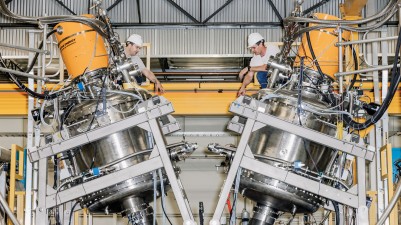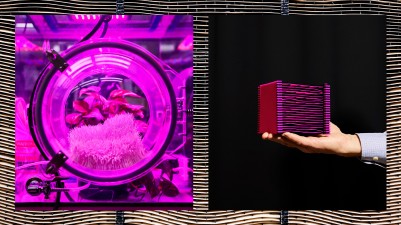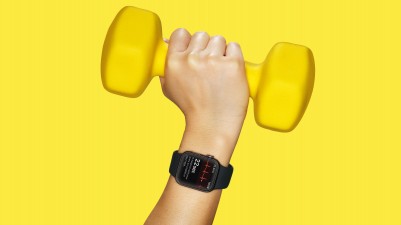10 Breakthrough Technologies 2019
How we’ll invent the future, by Bill Gates
We asked Gates to choose this year’s list of inventions that will change the world for the better.
I was honored when MIT Technology Review invited me to be the first guest curator of its 10 Breakthrough Technologies. Narrowing down the list was difficult. I wanted to choose things that not only will create headlines in 2019 but captured this moment in technological history—which got me thinking about how innovation has evolved over time.
My mind went to—of all things—the plow. Plows are an excellent embodiment of the history of innovation. Humans have been using them since 4000 BCE, when Mesopotamian farmers aerated soil with sharpened sticks. We’ve been slowly tinkering with and improving them ever since, and today’s plows are technological marvels.
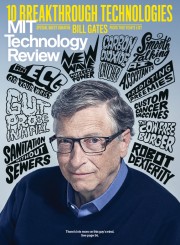
Subscribe
But what exactly is the purpose of a plow?
As well as his introductory essay, read Bill Gates’s conversation with editor in chief Gideon Lichfield. Below are his picks for the 10 Breakthrough Technologies.
Robot dexterity
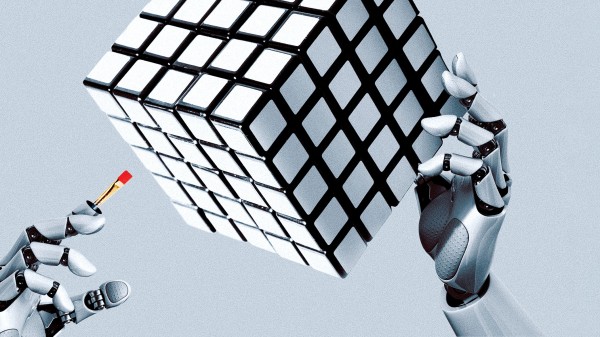
Robot dexterity
- Why it matters If robots could learn to deal with the messiness of the real world, they could do many more tasks.
-
Key Players
OpenAI
Carnegie Mellon University
University of Michigan
UC Berkeley - Availability 3-5 years
Robots are teaching themselves to handle the physical world.
For all the talk about machines taking jobs, industrial robots are still clumsy and inflexible. A robot can repeatedly pick up a component on an assembly line with amazing precision and without ever getting bored—but move the object half an inch, or replace it with something slightly different, and the machine will fumble ineptly or paw at thin air.
But while a robot can’t yet be programmed to figure out how to grasp any object just by looking at it, as people do, it can now learn to manipulate the object on its own through virtual trial and error.
One such project is Dactyl, a robot that taught itself to flip a toy building block in its fingers. Dactyl, which comes from the San Francisco nonprofit OpenAI, consists of an off-the-shelf robot hand surrounded by an array of lights and cameras. Using what’s known as reinforcement learning, neural-network software learns how to grasp and turn the block within a simulated environment before the hand tries it out for real. The software experiments, randomly at first, strengthening connections within the network over time as it gets closer to its goal.
It usually isn’t possible to transfer that type of virtual practice to the real world, because things like friction or the varied properties of different materials are so difficult to simulate. The OpenAI team got around this by adding randomness to the virtual training, giving the robot a proxy for the messiness of reality.
We’ll need further breakthroughs for robots to master the advanced dexterity needed in a real warehouse or factory. But if researchers can reliably employ this kind of learning, robots might eventually assemble our gadgets, load our dishwashers, and even help Grandma out of bed. —Will Knight
New-wave nuclear power

Advanced fusion and fission reactors are edging closer to reality.
New nuclear designs that have gained momentum in the past year are promising to make this power source safer and cheaper. Among them are generation IV fission reactors, an evolution of traditional designs; small modular reactors; and fusion reactors, a technology that has seemed eternally just out of reach. Developers of generation IV fission designs, such as Canada’s Terrestrial Energy and Washington-based TerraPower, have entered into R&D partnerships with utilities, aiming for grid supply (somewhat optimistically, maybe) by the 2020s.
Small modular reactors typically produce in the tens of megawatts of power (for comparison, a traditional nuclear reactor produces around 1,000 MW). Companies like Oregon’s NuScale say the miniaturized reactors can save money and reduce environmental and financial risks.
There has even been progress on fusion. Though no one expects delivery before 2030, companies like General Fusion and Commonwealth Fusion Systems, an MIT spinout, are making some headway. Many consider fusion a pipe dream, but because the reactors can’t melt down and don’t create long-lived, high-level waste, it should face much less public resistance than conventional nuclear. (Bill Gates is an investor in TerraPower and Commonwealth Fusion Systems.) —Leigh Phillips
Predicting preemies
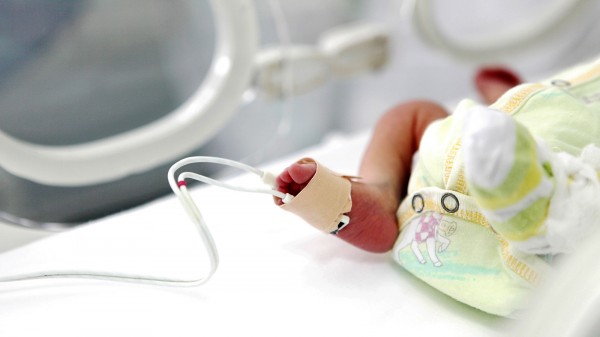
Predicting preemies
- Why it matters 15 million babies are born prematurely every year; it’s the leading cause of death for children under age five
- Key player Akna Dx
- Availability A test could be offered in doctor’s offices within five years
A simple blood test can predict if a pregnant woman is at risk of giving birth prematurely.
Our genetic material lives mostly inside our cells. But small amounts of “cell-free” DNA and RNA also float in our blood, often released by dying cells. In pregnant women, that cell-free material is an alphabet soup of nucleic acids from the fetus, the placenta, and the mother.
Stephen Quake, a bioengineer at Stanford, has found a way to use that to tackle one of medicine’s most intractable problems: the roughly one in 10 babies born prematurely.
Free-floating DNA and RNA can yield information that previously required invasive ways of grabbing cells, such as taking a biopsy of a tumor or puncturing a pregnant woman’s belly to perform an amniocentesis. What’s changed is that it’s now easier to detect and sequence the small amounts of cell-free genetic material in the blood. In the last few years researchers have begun developing blood tests for cancer (by spotting the telltale DNA from tumor cells) and for prenatal screening of conditions like Down syndrome.
The tests for these conditions rely on looking for genetic mutations in the DNA. RNA, on the other hand, is the molecule that regulates gene expression—how much of a protein is produced from a gene. By sequencing the free-floating RNA in the mother’s blood, Quake can spot fluctuations in the expression of seven genes that he singles out as associated with preterm birth. That lets him identify women likely to deliver too early. Once alerted, doctors can take measures to stave off an early birth and give the child a better chance of survival.
The technology behind the blood test, Quake says, is quick, easy, and less than $10 a measurement. He and his collaborators have launched a startup, Akna Dx, to commercialize it. —Bonnie Rochman
Gut probe in a pill

Gut probe in a pill
- Why it matters The device makes it easier to screen for and study gut diseases, including one that keeps millions of children in poor countries from growing properly
- Key player Massachusetts General Hospital
- Availability Now used in adults; testing in infants begins in 2019
A small, swallowable device captures detailed images of the gut without anesthesia, even in infants and children.
Environmental enteric dysfunction (EED) may be one of the costliest diseases you’ve never heard of. Marked by inflamed intestines that are leaky and absorb nutrients poorly, it’s widespread in poor countries and is one reason why many people there are malnourished, have developmental delays, and never reach a normal height. No one knows exactly what causes EED and how it could be prevented or treated.
Practical screening to detect it would help medical workers know when to intervene and how. Therapies are already available for infants, but diagnosing and studying illnesses in the guts of such young children often requires anesthetizing them and inserting a tube called an endoscope down the throat. It’s expensive, uncomfortable, and not practical in areas of the world where EED is prevalent.
So Guillermo Tearney, a pathologist and engineer at Massachusetts General Hospital (MGH) in Boston, is developing small devices that can be used to inspect the gut for signs of EED and even obtain tissue biopsies. Unlike endoscopes, they are simple to use at a primary care visit.
Tearney’s swallowable capsules contain miniature microscopes. They’re attached to a flexible string-like tether that provides power and light while sending images to a briefcase-like console with a monitor. This lets the health-care worker pause the capsule at points of interest and pull it out when finished, allowing it to be sterilized and reused. (Though it sounds gag-inducing, Tearney’s team has developed a technique that they say doesn’t cause discomfort.) It can also carry technologies that image the entire surface of the digestive tract at the resolution of a single cell or capture three-dimensional cross sections a couple of millimeters deep.
The technology has several applications; at MGH it’s being used to screen for Barrett’s esophagus, a precursor of esophageal cancer. For EED, Tearney’s team has developed an even smaller version for use in infants who can’t swallow a pill. It’s been tested on adolescents in Pakistan, where EED is prevalent, and infant testing is planned for 2019.
The little probe will help researchers answer questions about EED’s development—such as which cells it affects and whether bacteria are involved—and evaluate interventions and potential treatments. —Courtney Humphries
Custom cancer vaccines
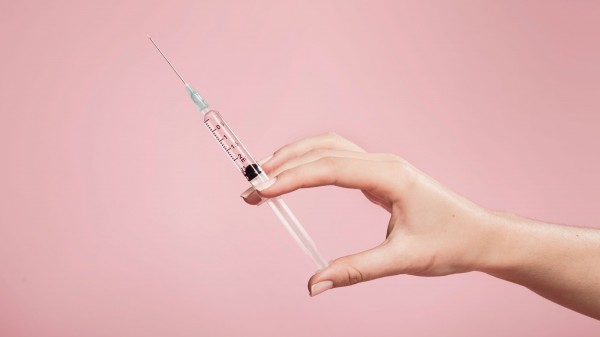
Custom Cancer Vaccines
- Why it matters Conventional chemotherapies take a heavy toll on healthy cells and aren’t always effective against tumors
-
Key players
BioNTech
Genentech - Availability In human testing
The treatment incites the body’s natural defenses to destroy only cancer cells by identifying mutations unique to each tumor
Scientists are on the cusp of commercializing the first personalized cancer vaccine. If it works as hoped, the vaccine, which triggers a person’s immune system to identify a tumor by its unique mutations, could effectively shut down many types of cancers.
By using the body’s natural defenses to selectively destroy only tumor cells, the vaccine, unlike conventional chemotherapies, limits damage to healthy cells. The attacking immune cells could also be vigilant in spotting any stray cancer cells after the initial treatment.
The possibility of such vaccines began to take shape in 2008, five years after the Human Genome Project was completed, when geneticists published the first sequence of a cancerous tumor cell.
Soon after, investigators began to compare the DNA of tumor cells with that of healthy cells—and other tumor cells. These studies confirmed that all cancer cells contain hundreds if not thousands of specific mutations, most of which are unique to each tumor.
A few years later, a German startup called BioNTech provided compelling evidence that a vaccine containing copies of these mutations could catalyze the body’s immune system to produce T cells primed to seek out, attack, and destroy all cancer cells harboring them.
In December 2017, BioNTech began a large test of the vaccine in cancer patients, in collaboration with the biotech giant Genentech. The ongoing trial is targeting at least 10 solid cancers and aims to enroll upwards of 560 patients at sites around the globe.
The two companies are designing new manufacturing techniques to produce thousands of personally customized vaccines cheaply and quickly. That will be tricky because creating the vaccine involves performing a biopsy on the patient’s tumor, sequencing and analyzing its DNA, and rushing that information to the production site. Once produced, the vaccine needs to be promptly delivered to the hospital; delays could be deadly. —Adam Piore
The cow-free burger
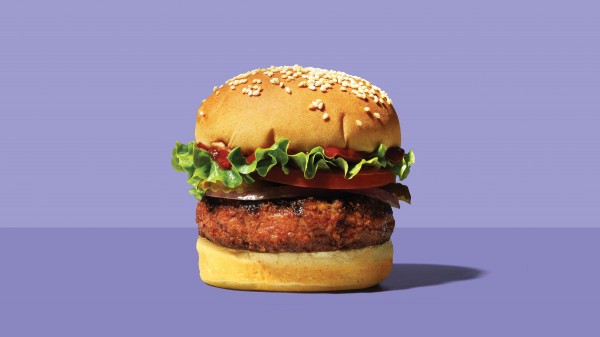
The cow-free burger
- Why it matters Livestock production causes catastrophic deforestation, water pollution, and greenhouse-gas emissions
-
Key players
Beyond Meat
Impossible Foods - Availability Plant-based now; lab-grown around 2020
Both lab-grown and plant-based alternatives approximate the taste and nutritional value of real meat without the environmental devastation.
The UN expects the world to have 9.8 billion people by 2050. And those people are getting richer. Neither trend bodes well for climate change—especially because as people escape poverty, they tend to eat more meat.
By that date, according to the predictions, humans will consume 70% more meat than they did in 2005. And it turns out that raising animals for human consumption is among the worst things we do to the environment.
Depending on the animal, producing a pound of meat protein with Western industrialized methods requires 4 to 25 times more water, 6 to 17 times more land, and 6 to 20 times more fossil fuels than producing a pound of plant protein.
The problem is that people aren’t likely to stop eating meat anytime soon. Which means lab-grown and plant-based alternatives might be the best way to limit the destruction.
Making lab-grown meat involves extracting muscle tissue from animals and growing it in bioreactors. The end product looks much like what you’d get from an animal, although researchers are still working on the taste. Researchers at Maastricht University in the Netherlands, who are working to produce lab-grown meat at scale, believe they'll have a lab-grown burger available by next year. One drawback of lab-grown meat is that the environmental benefits are still sketchy at best—a recent World Economic Forum report says the emissions from lab-grown meat would be only around 7% less than emissions from beef production.
The better environmental case can be made for plant-based meats from companies like Beyond Meat and Impossible Foods (Bill Gates is an investor in both companies), which use pea proteins, soy, wheat, potatoes, and plant oils to mimic the texture and taste of animal meat.
Beyond Meat has a new 26,000-square-foot (2,400-square-meter) plant in California and has already sold upwards of 25 million burgers from 30,000 stores and restaurants. According to an analysis by the Center for Sustainable Systems at the University of Michigan, a Beyond Meat patty would probably generate 90% less in greenhouse-gas emissions than a conventional burger made from a cow. —Markkus Rovito
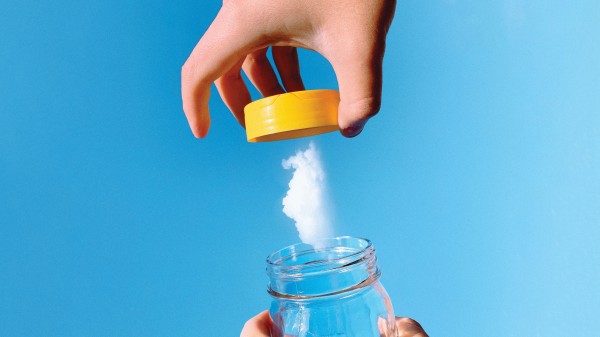
Carbon dioxide catcher
- Why it matters Removing CO2 from the atmosphere might be one of the last viable ways to stop catastrophic climate change
-
Key players
Carbon Engineering
Climeworks
Global Thermostat - Availability 5-10 years
Carbon dioxide catcher
Practical and affordable ways to capture carbon dioxide from the air can soak up excess greenhouse-gas emissions.
Even if we slow carbon dioxide emissions, the warming effect of the greenhouse gas can persist for thousands of years. To prevent a dangerous rise in temperatures, the UN’s climate panel now concludes, the world will need to remove as much as 1 trillion tons of carbon dioxide from the atmosphere this century.
In a surprise finding last summer, Harvard climate scientist David Keith calculated that machines could, in theory, pull this off for less than $100 a ton, through an approach known as direct air capture. That’s an order of magnitude cheaper than earlier estimates that led many scientists to dismiss the technology as far too expensive—though it will still take years for costs to fall to anywhere near that level.
But once you capture the carbon, you still need to figure out what to do with it.
Carbon Engineering, the Canadian startup Keith cofounded in 2009, plans to expand its pilot plant to ramp up production of its synthetic fuels, using the captured carbon dioxide as a key ingredient. (Bill Gates is an investor in Carbon Engineering.)
Zurich-based Climeworks’s direct air capture plant in Italy will produce methane from captured carbon dioxide and hydrogen, while a second plant in Switzerland will sell carbon dioxide to the soft-drinks industry. So will Global Thermostat of New York, which finished constructing its first commercial plant in Alabama last year.
Still, if it’s used in synthetic fuels or sodas, the carbon dioxide will mostly end up back in the atmosphere. The ultimate goal is to lock greenhouse gases away forever. Some could be nested within products like carbon fiber, polymers, or concrete, but far more will simply need to be buried underground, a costly job that no business model seems likely to support.
In fact, pulling CO2 out of the air is, from an engineering perspective, one of the most difficult and expensive ways of dealing with climate change. But given how slowly we’re reducing emissions, there are no good options left. —James Temple
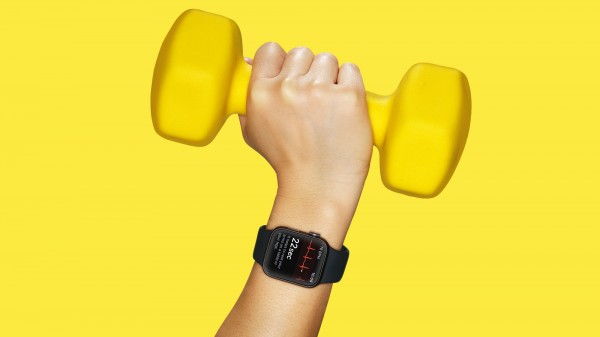
An ECG on your wrist
Regulatory approval and technological advances are making it easier for people to continuously monitor their hearts with wearable devices.
Fitness trackers aren’t serious medical devices. An intense workout or loose band can mess with the sensors that read your pulse. But an electrocardiogram—the kind doctors use to diagnose abnormalities before they cause a stroke or heart attack— requires a visit to a clinic, and people often fail to take the test in time.
ECG-enabled smart watches, made possible by new regulations and innovations in hardware and software, offer the convenience of a wearable device with something closer to the precision of a medical one.
An Apple Watch–compatible band from Silicon Valley startup AliveCor that can detect atrial fibrillation, a frequent cause of blood clots and stroke, received clearance from the FDA in 2017. Last year, Apple released its own FDA-cleared ECG feature, embedded in the watch itself.
The health-device company Withings also announced plans for an ECG-equipped watch shortly after.
Current wearables still employ only a single sensor, whereas a real ECG has 12. And no wearable can yet detect a heart attack as it’s happening.
But this might change soon. Last fall, AliveCor presented preliminary results to the American Heart Association on an app and two-sensor system that can detect a certain type of heart attack. —Karen Hao

Sanitation without sewers
- Why it matters 2.3 billion people lack safe sanitation, and many die as a result
-
Key players
Duke University
University of South Florida
Biomass Controls
California Institute of Technology - Availability 1-2 years
Sanitation without sewers
Energy-efficient toilets can operate without a sewer system and treat waste on the spot.
About 2.3 billion people don’t have good sanitation. The lack of proper toilets encourages people to dump fecal matter into nearby ponds and streams, spreading bacteria, viruses, and parasites that can cause diarrhea and cholera. Diarrhea causes one in nine child deaths worldwide.
Now researchers are working to build a new kind of toilet that’s cheap enough for the developing world and can not only dispose of waste but treat it as well.
In 2011 Bill Gates created what was essentially the X Prize in this area—the Reinvent the Toilet Challenge. Since the contest’s launch, several teams have put prototypes in the field. All process the waste locally, so there’s no need for large amounts of water to carry it to a distant treatment plant.
Most of the prototypes are self-contained and don’t need sewers, but they look like traditional toilets housed in small buildings or storage containers. The NEWgenerator toilet, designed at the University of South Florida, filters out pollutants with an anaerobic membrane, which has pores smaller than bacteria and viruses. Another project, from Connecticut-based Biomass Controls, is a refinery the size of a shipping container; it heats the waste to produce a carbon-rich material that can, among other things, fertilize soil.
One drawback is that the toilets don’t work at every scale. The Biomass Controls product, for example, is designed primarily for tens of thousands of users per day, which makes it less well suited for smaller villages. Another system, developed at Duke University, is meant to be used only by a few nearby homes.
So the challenge now is to make these toilets cheaper and more adaptable to communities of different sizes. “It’s great to build one or two units,” says Daniel Yeh, an associate professor at the University of South Florida, who led the NEWgenerator team. “But to really have the technology impact the world, the only way to do that is mass-produce the units.” —Erin Winick
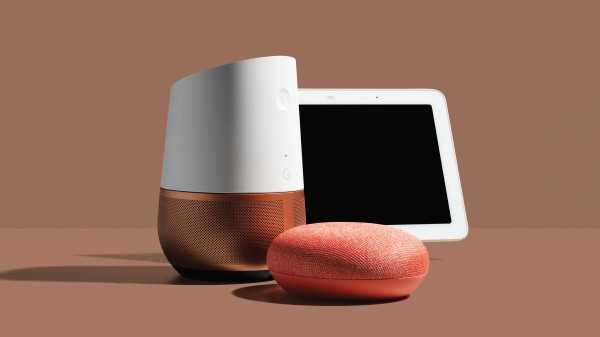
Smooth-talking AI assistants
- Why it matters AI assistants can now perform conversation-based tasks like booking a restaurant reservation or coordinating a package drop-off rather than just obey simple commands
-
Key players
Google
Alibaba
Amazon - Availability 1-2 years
Smooth-talking AI assistants
New techniques that capture semantic relationships between words are making machines better at understanding natural language.
We’re used to AI assistants—Alexa playing music in the living room, Siri setting alarms on your phone—but they haven’t really lived up to their alleged smarts. They were supposed to have simplified our lives, but they’ve barely made a dent. They recognize only a narrow range of directives and are easily tripped up by deviations.
But some recent advances are about to expand your digital assistant’s repertoire. In June 2018, researchers at OpenAI developed a technique that trains an AI on unlabeled text to avoid the expense and time of categorizing and tagging all the data manually. A few months later, a team at Google unveiled a system called BERT that learned how to predict missing words by studying millions of sentences. In a multiple-choice test, it did as well as humans at filling in gaps.
These improvements, coupled with better speech synthesis, are letting us move from giving AI assistants simple commands to having conversations with them. They’ll be able to deal with daily minutiae like taking meeting notes, finding information, or shopping online.
Some are already here. Google Duplex, the eerily human-like upgrade of Google Assistant, can pick up your calls to screen for spammers and telemarketers. It can also make calls for you to schedule restaurant reservations or salon appointments.
In China, consumers are getting used to Alibaba’s AliMe, which coordinates package deliveries over the phone and haggles about the price of goods over chat.
But while AI programs have gotten better at figuring out what you want, they still can’t understand a sentence. Lines are scripted or generated statistically, reflecting how hard it is to imbue machines with true language understanding. Once we cross that hurdle, we’ll see yet another evolution, perhaps from logistics coordinator to babysitter, teacher—or even friend? —Karen Hao
Tech Obsessive?
Become an Insider to get the story behind the story — and before anyone else.

